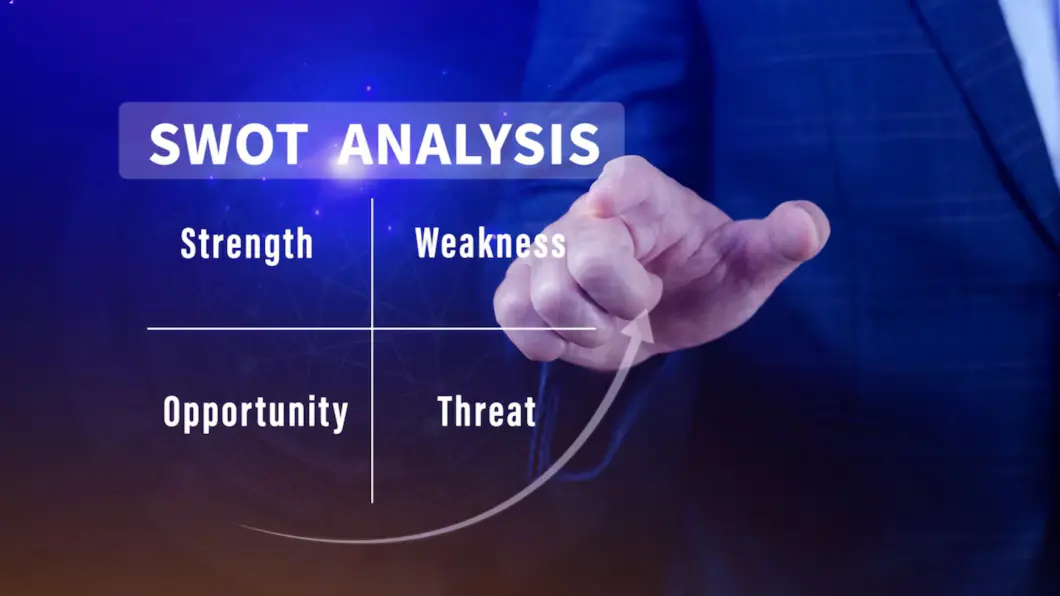What is Net Realizable Value (NRV)?
Net realizable value is an accounting concept to determine the true value of a company’s inventory by subtracting selling expenses from its fair market value. This conservative approach to accounting requires assets to be reported at the lower of cost to avoid accounting errors.
Two key components are involved in calculating NRV: the expected selling price of the asset and the costs to complete and sell that asset. You can simplify this calculation using ERP software, which allows you to record and adjust costs or prices in real time.
Importance of NRV in Accounting
The key objective of net realizable value is to record inventory at either the historical cost or the market value, whichever is lower, to comply with the lower of cost or market principle. And, it must be done in compliance with International Financial Reporting Standards (IFRS) and Generally Accepted Accounting Principles (GAAP).
What happens when you do not report net realizable value?
- Your inventory may be valued at a higher price compared to its actual value
- You may not know the replacement cost of inventory, in case it needs to be replaced.
- Your inventory books may not comply with IFRS accounting standards, which require inventory reporting at the lower of cost
- Your cost of goods sold(COGS) could be reported low, and profit high
- Reporting of losses could be unnecessarily delayed, which could cause investors to lose faith in the numbers reported by your company
— You can also read : Value Change Function in Sage X3 —
NRV Application in Accounting
NRV enables you to declare the actual value of your inventory and accounts receivable. Beyond that, this concept can be applied to cost accounting, where you can allocate precise costs to goods sold using the best ERP software available in India.
Now, let us look at where you can apply NRV at your factory.
1. Inventory Valuation
NRV in inventory accounting helps in valuing inventory at a lower cost, a useful metric to write down stock items that may have been reduced in value or cannot be sold for some reason.
A manufacturer has to deal with the associated costs of selling inventory, such as brokerage, logistics costs, disposal costs and taxes.
With the help of inventory management software in ERP, you can automate the deduction of inventory selling expenses from the estimated selling price to calculate the net realizable value.
2. Accounts Receivable
Sometimes, the invoice amount billed to customers may not be fully recoverable due to cash flow crisis, bankruptcy, or invoice disputes, among other reasons.
To report such doubtful accounts, the accounts receivable balance must be adjusted with the help of NRV formula to indicate the actual amount that can be collected from customers.
For example, accounts receivable automation and the general ledger module in Sage X3 ERP enable provisions for bad debt expenses and build custom NRV reports.
3. Cost Accounting
Cost accounting allows you to allocate accurate production costs to multiple products made together at your manufacturing facility.
By reducing the separable costs from the total estimated selling price of each item, you can fairly distribute the joint costs among the items.
This allows you to accurately calculate NRV and evaluate the profitability of different items being produced in your factory.
Net Realizable Value Formula (NRV)
Net Realizable Value (NRV) is calculated using the following formula:
Net Realizable Value (NRV) = Fair Market Value – Selling Expenses
Calculating Net Realizable Value
The calculation of Net Realizable Value (NRV) follows the lower cost, also known as the market method, of asset or inventory valuation.
Fortunately, NRV is not manually calculated. Automated ERP modules communicate seamlessly across different departments to help you instantly pull inventory, production, sales and financial data and generate accurate net realisable value.
Here are the three steps you need to follow to calculate net realizable value:
1. Find Fair Market Value
Estimate your inventory’s fair market value by considering factors like current market prices, condition of inventory, inventory turnover ratio, economic conditions, etc.
2. Identify Selling & Recovery Expenses
For selling manufactured goods, expenses could include commissions, packaging & transportation costs. For accounts receivable, expenses such as legal fees paid to recover customer dues must be identified.
3. Determine Asset’s Net Realizable Value
Finally, subtract the selling expenses from the fair market value of the inventory to determine the net realizable value. Similarly, reduce recovery expenses from accounts receivable to deduce NRV.
Net Realizable Value Example
NRV concept is commonly used in industries where inventory value undergoes rapid changes. For instance, in the food and beverage industry, where expiry date and shelf-life management are crucial, an ERP solution simplifies accounting for net realisable value.
The following is an example of NRV calculation for inventory valuation.
Expected selling price of your inventory = Rs 10,00,000
Estimated cost to complete selling (shipping, commission) = Rs 1,50,000
NRV = Fair market value or expected selling price – selling expenses
NRV = 10,00,000 – 1,50,000 = Rs 8,50,000
If the existing book value of your inventory is higher than Rs 8,50,000, then it must be written down to Rs 8,50,000.
Difference Between Net Realizable Value & Fair Market Value
| Net Realizable Value | Fair Market Value | |
| Meaning | Estimated selling price of an asset minus costs to sell or complete it | Price at which an asset would sell in an open market between willing buyer and seller |
| Objective | To value inventory or receivables accurately for financial reporting | To determine the asset’s market value for transactions, taxation, or appraisal |
| Calculation | Expected net cash inflow from sale (selling price – costs) | Market price based on supply, demand and market conditions |
| Purpose | Used in inventory valuation under GAAP and IFRS | Used in asset valuation, tax assessments, and legal matters |
| Costs Considered | Subtracts costs like completion, selling and disposal | Does not deduct selling or completion costs, reflects gross price |
| Application | Inventory write-downs when market value drops below cost | Real estate sales price and machinery valuation |
Benefits of Net Realizable Value
Some of the notable advantages of net realizable value are as follows:
1. Accurate Financial Reporting
NRV ensures the financial reporting accuracy of inventory and profitability in the income statement. NRV presents a fair view of the company’s financial position to the stakeholders and lenders.
2. Compliance with Accounting Principles
Compliance failure could lead to penalties. NRV ensures that the reporting of inventory values complies with leading accounting standards, such as India’s IndAS.
3. Informed Decision-making
NRV helps in cash flow planning by calculating how much you can earn from existing inventory. It makes it easier for you to set selling prices and improve inventory management.
4. Avoid Overstatement in Financial Statements
The fundamental principle behind NRV is risk management through cautious reporting of asset values. ERP application empowers you to extract realistic values while protecting the users from false data.
Limitations of Net Realizable Value
1. Calculation Difficulty
NRV requires you to estimate sales price and inventory costs, making it challenging to calculate NRV precisely.
2. Market Volatility
NRV is affected by current market price volatility, requiring regular adjustments in values.
3. Accounting Bias
Personal bias in accounting may lead to misjudgment and accounting errors.
4. Complex Implementation
Not having a standardised procedure to determine NRV can lead to inconsistent reporting.
NRV and Sage X3 for Accurate Financial Reporting
Net realizable value is a fundamental measure for valuing inventory and assets, accurately and conservatively. It prevents overstatement of asset values so that your financial statements reflect a realistic view of your company’s financial standing.
In essence, net realizable value allows you to avoid costly accounting errors and streamline resource allocation. Sage X3 is a multi-dimensional ERP system that simplifies inventory accounting while streamlining your business operations to enhance decision-making and financial reporting.
FAQs
1. What Is Net Realizable Value (NRV)?
Net realizable value is the final value or net amount your company expects to get from selling an asset, less selling costs.
2. How Do You Calculate NRV?
NRV = Estimated selling price – Costs to complete and sell
3. Does NRV Apply to All Assets?
NRV is commonly used for valuing inventory, especially if an inventory item becomes outdated or its market value falls. It is also used to calculate the receivable balance for doubtful accounts.
4. Is NRV Required By Accounting Rules?
Yes, both IFRS and GAAP require using NRV for inventory valuation and accounts receivable.






